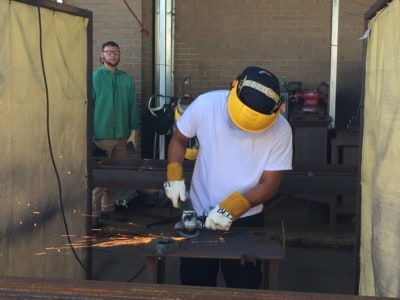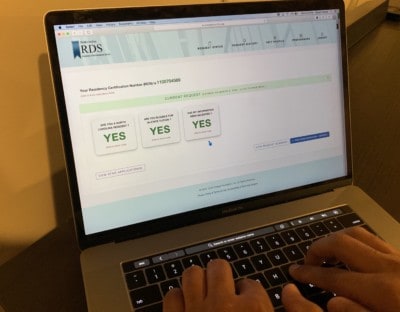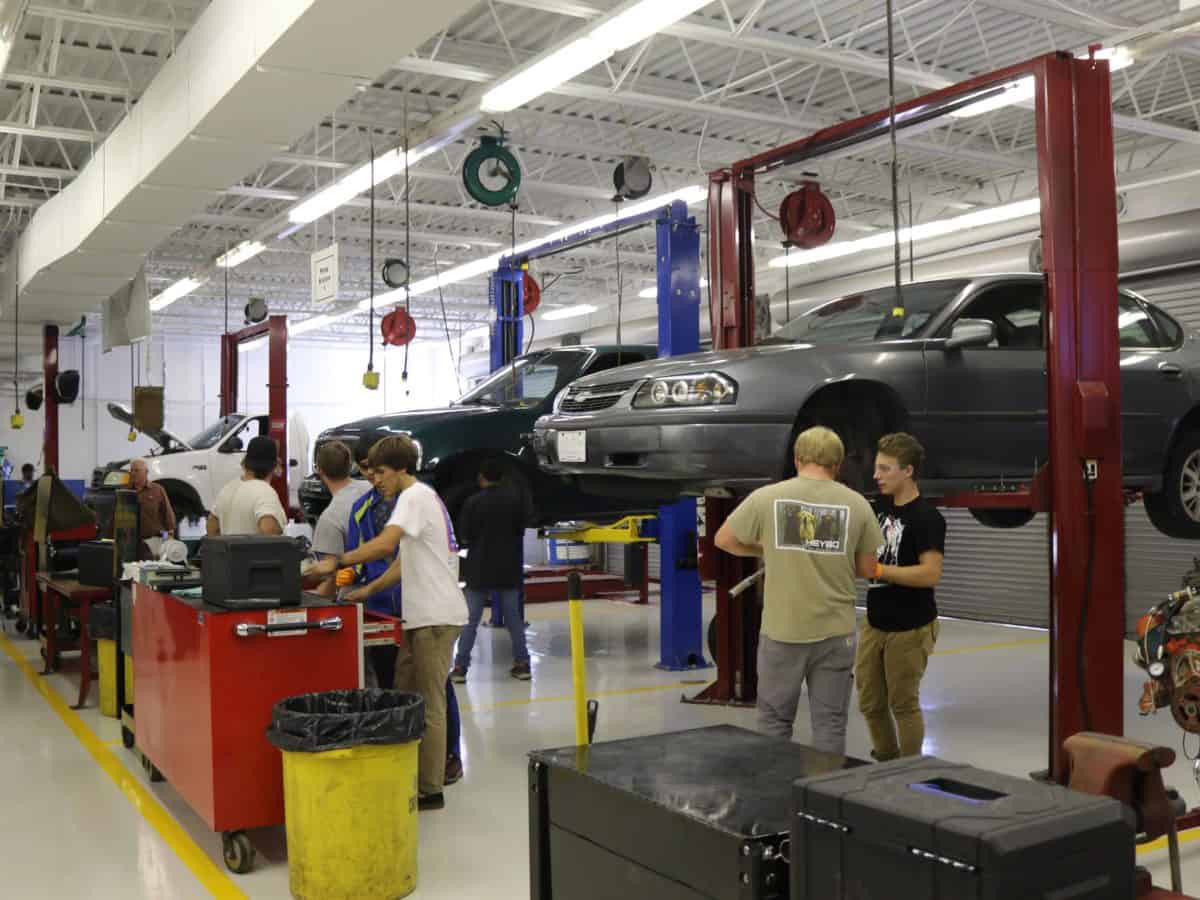

A community college task force focused on increasing enrollment in the community college system heard more details on the trend-breaking enrollment increase from 2018-19 in colleges across the state.
Dale McInnis, member of the task force and president of Richmond Community College, said that policy changes that focus on parity funding for career and technical education when compared to curriculum programs are partly responsible for the increases.
“Those policy changes starting in 18-19, you’re seeing the payoff,” he said. “In some cases, it is finding out what bottom is and being able to establish where a new norm exists.”
New data recently revealed enrollment increases at 53 out of the state’s 58 community colleges. Systemwide, enrollment at community colleges increased 4.4%. Workforce programs saw a 9.4% increase and curriculum programs a 3.8% boost. This follows a trend of steady decreases since a peak in enrollment in 2010.
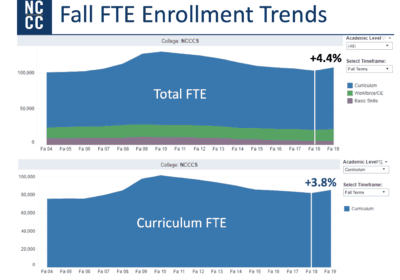

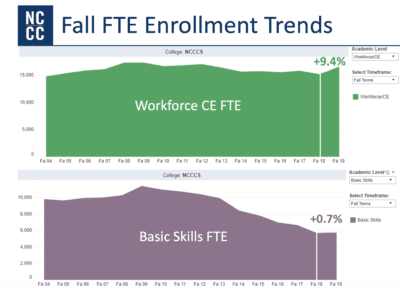

The board heard more details on what the enrollment increases look like when broken down into specifics.
For instance, curriculum saw the biggest boost among students under age 18, many of whom are high school students taking advantage of community college classes through Cooperative Innovative High Schools and the Career and College Promise Program. Workforce programs, on the other hand, saw the biggest boost among those ages 18 to 24.
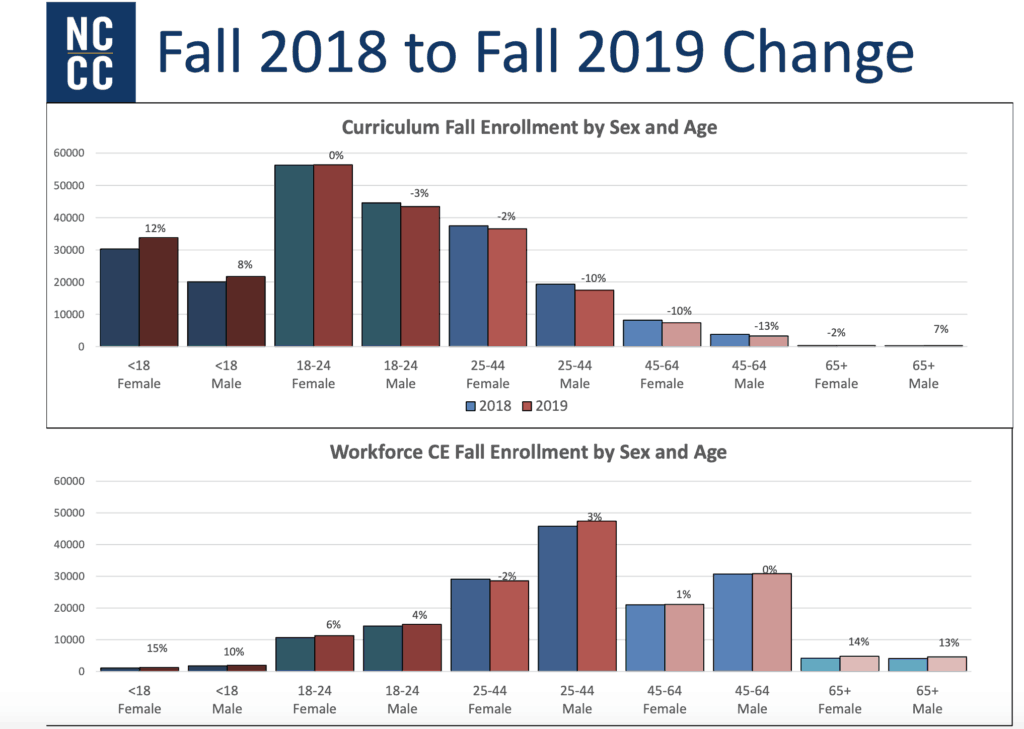

In both curriculum and workforce training, the biggest increases in enrollment were at multi-campus centers: 12% for curriculum and 22% for workforce.
Jennifer Haygood, chief of staff and executive vice president for the community college system, said that a policy adopted by the State Board mandating that multi-campus centers maintain a certain level of enrollment contributed to this increase.
“We do think this is largely in response to that policy change,” she said.
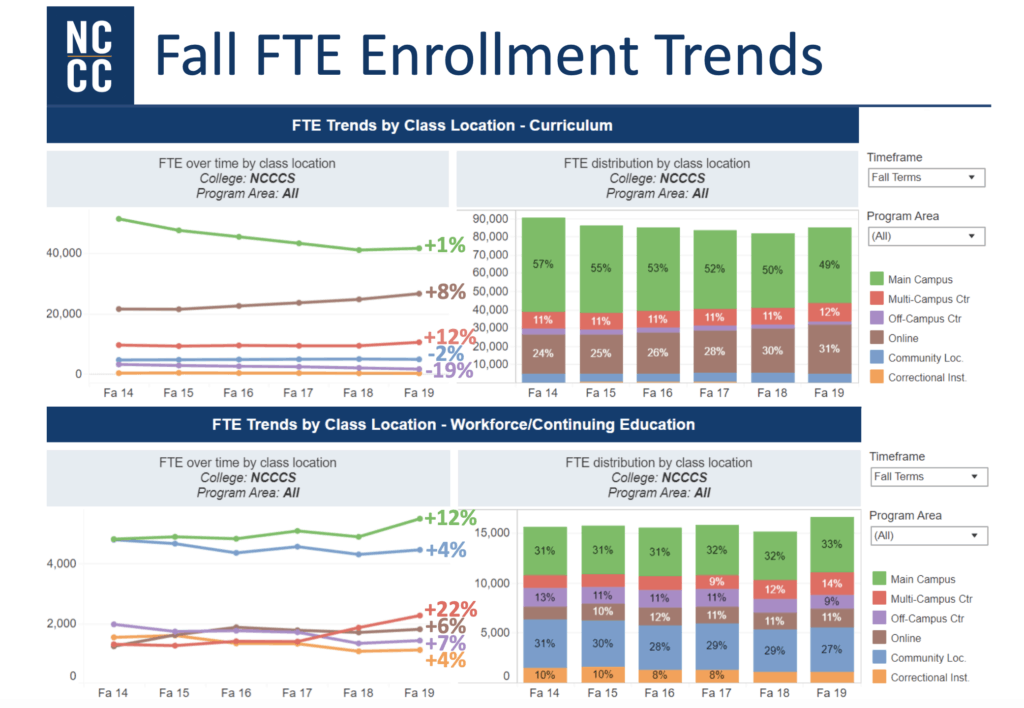

Meanwhile, the number of sections and subjects offered in curriculum has decreased while those for workforce training have increased. Haygood said that might actually be good news when it comes to curriculum programs, which may have been offering too many courses with not enough students to fill them.
“It may be that colleges are ensuring that they are rightsizing their curriculum, perhaps is a way of putting it,” she said.
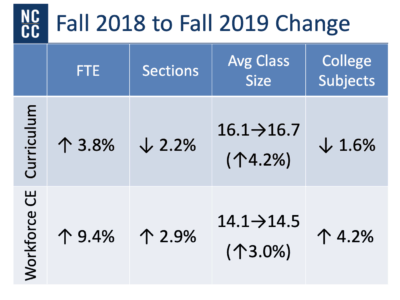

In a chart showing the enrollment increases and decreases for individual colleges, the trend shows a dramatic change from the 2017-18 school year to the 2018-19 school year.
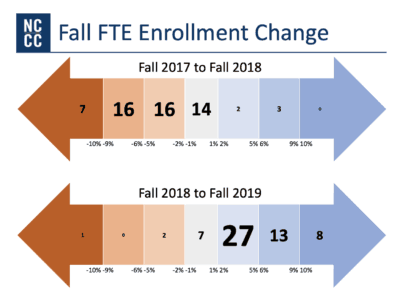

McInnis noted one area where the community college system needs to pay more attention: basic skills. Enrollment in these programs has been trending down for years and the increase in the 2018-19 school year was only 0.7%.
“Basic skills is still pulling down the total. And that is an area that needs attention in the state,” he said. “That’s an opportunity that we don’t talk about very much.”
He also said that demographic changes in counties around the state still pose a danger for community colleges. Some counties are seeing a decline in population generally as well as decreases in the stock of college-aged students.
“There are ceilings unless you can change the equation … as far as how far you can go,” McGinnis said.


